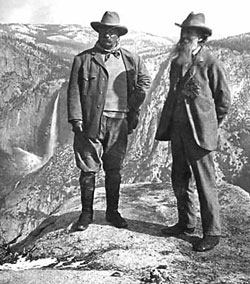
Beavers pool effort in watery DIY
The dipper bobbing along the top of the dam looks oddly smart in this drunken landscape, his clean white bib reflected in the water below. All around is chaos. The beavers have felled most of the bankside birch, sycamore and other trees they like to eat and use for their dams.
Beavers work at night. During the day it is only humans tap-tapping away with their hammers, building a hide above the Cateran trail to allow walkers to catch a glimpse of the creature that engineered this bog.
Pink-footed geese fly overhead on their way back to Greenland, rooks caw in the beech trees, a charm of chaffinches sing from the dead branches of an alder, and black-headed gulls follow a tractor ploughing in the distance.
Spraint smeared on a rock announces that otters are here too. They have a rather one-sided relationship with beavers. The otters benefit from the increase in fish and invertebrates around the dams. Come spring they will also hunt the vulnerable beaver kits, obliging the mother beaver, twice the size of the predatory mustelid, to patrol the lodge.
The dams, constructed of twigs and branches laid on top of one another, are constantly being repaired and rebuilt to create a series of pools and canals where the beavers can move safely undetected and build entrances to their lodges and subsidiary burrows underwater.
The Burnieshed has been re-braided: forced into narrow rivulets it rushes and tumbles, waiting in pools it fizzes and foams. On Baikie Burn, another tributary of the Isla, the beaver dam has been cleared away, but not before a field nearby was flooded.
A swath of winter wheat is dead, drowned and scorched by the sun. The only sign of life is the tracks of a roe deer pricked into the earth. The burn flows quietly now, past a mink trap and beneath the road.
 This article by Louise Gray is a vibrant look at the beaver pond and the many creatures who benefit from it. Environmental writer to the Telegraph and freelance author, Louise has really captured the pond here. I couldn’t be more impressed. She must have spent many hours at the Ramsey’s beaver pond or read this website over many consecutive days! Honestly, she hits every beaver improvement made, right down to the invertebrates and re-braiding rivers. This article is so well written and beautifully phased it reminds me of this:
This article by Louise Gray is a vibrant look at the beaver pond and the many creatures who benefit from it. Environmental writer to the Telegraph and freelance author, Louise has really captured the pond here. I couldn’t be more impressed. She must have spent many hours at the Ramsey’s beaver pond or read this website over many consecutive days! Honestly, she hits every beaver improvement made, right down to the invertebrates and re-braiding rivers. This article is so well written and beautifully phased it reminds me of this:
Onto a slightly less informed but no less passionate article from the editor of the New Carlisle News in Ohio where a Wetlands is being monitored and attended to just outside the town of New Carlisle.
Group Promotes Appreciation for New Carlisle Wetland Species
So there’s a wetlands site in New Carlisle, and it’s kind of a big deal. Laden with unique and threatened plant species, the Brubaker Wetlands is hidden away just a stone’s throw from downtown, and I feel very comfortable calling it the city’s best-kept secret.
Tucked away just off the bike trail that runs through Smith Park, the wetlands truly are a separate microcosm within the city’s hustle and bustle, as the setting is somewhat surreal—full of strange, sometimes stinky plants popping up from the sodden ground—giving the visitor the impression that they’ve stepped far back in time.
One New Carlisle family is devoted to studying the wetlands and sparking an interest in the unique site among fellow residents. Having plans to schedule monthly cleanups along the trail and at the edge of the wetlands, as well as an upcoming snake survey, Nathan Ehlinger has lead the charge of bringing awareness to the unique site rich in biological diversity.
Ehlinger is a biologist who grew up in New Carlisle within sight of the wetlands. Now raising his own three children, he realized how significant the site is for its diversity and positive impact on the city’s drinking water, so he decided to promote it, hoping to instill appreciation for the wetlands in the younger generation.
Hurray! Appreciation for wetlands! In Ohio! A biologist who’s looking out for them! Monthly trail cleanups and classroom education! He invites the editor down to have a look at the outdoors he’s trying to defend. I’m almost entirely thrilled.
Almost.
He noted that the city even has its resident beaver, which has constructed at least five dams in one section of the wetlands. He pointed out that the beaver hasn’t caused any problems, but instead, works to control water levels and create open areas that are ideal for other animal species.
“The engineering of his den provides a habitat for migrating birds, and fish,” Ehlinger said of the beaver’s natural instincts to build.
Raise you’re hand when you see the worrisome part. I’ll wait. Read it again if you need to. “The engineering of his DEN provides habitat for migrating birds and fish.” That’s right. I just connected with Mr. Ehlinger and he assures me he was misquoted. He understands beavers don’t live in the dam and he’s very interested in what we’ve done in Martinez. It never ceases to amaze me, though how many people confuse the concept of lodge/den and dam. I would think some part of them would harken back to their days playing in the mud or building sandcastles as a child. How much water can you possibly hold back with a hollow wall? Beaver dams are solid. Nothing lives inside them, except some very happy invertebrates I guess.

















































